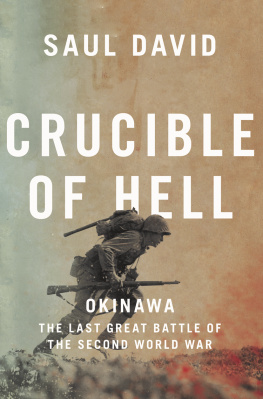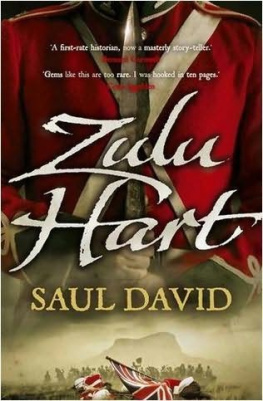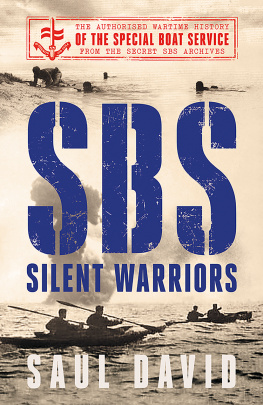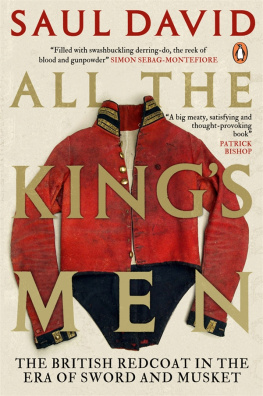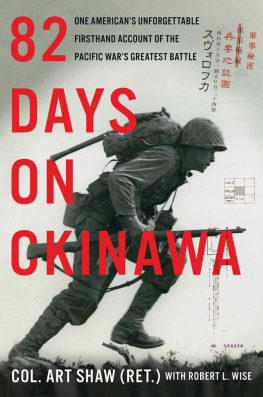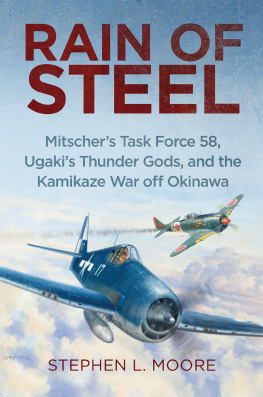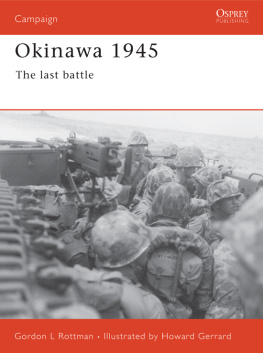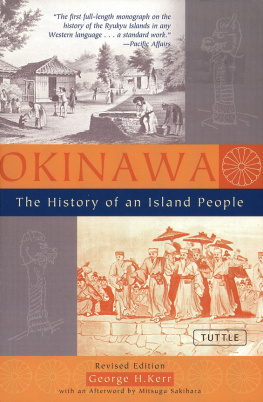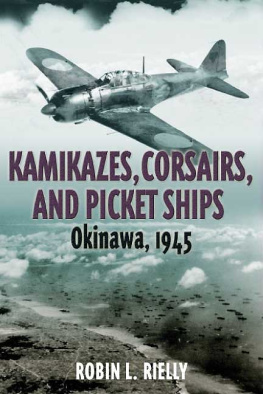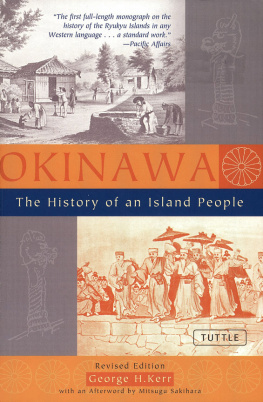Saul David - Crucible of Hell: Okinawa ; The Last Great Battle of the Second World War
Here you can read online Saul David - Crucible of Hell: Okinawa ; The Last Great Battle of the Second World War full text of the book (entire story) in english for free. Download pdf and epub, get meaning, cover and reviews about this ebook. year: 2020, publisher: William Collins, genre: History. Description of the work, (preface) as well as reviews are available. Best literature library LitArk.com created for fans of good reading and offers a wide selection of genres:
Romance novel
Science fiction
Adventure
Detective
Science
History
Home and family
Prose
Art
Politics
Computer
Non-fiction
Religion
Business
Children
Humor
Choose a favorite category and find really read worthwhile books. Enjoy immersion in the world of imagination, feel the emotions of the characters or learn something new for yourself, make an fascinating discovery.
- Book:Crucible of Hell: Okinawa ; The Last Great Battle of the Second World War
- Author:
- Publisher:William Collins
- Genre:
- Year:2020
- Rating:5 / 5
- Favourites:Add to favourites
- Your mark:
Crucible of Hell: Okinawa ; The Last Great Battle of the Second World War: summary, description and annotation
We offer to read an annotation, description, summary or preface (depends on what the author of the book "Crucible of Hell: Okinawa ; The Last Great Battle of the Second World War" wrote himself). If you haven't found the necessary information about the book — write in the comments, we will try to find it.
For the ferocity of the fighting, the loss of life on both sides, and the pivotal, war-ending potential of its outcome, the assault on Okinawa had no match. Named Operation Iceberg by the Americans leading the campaign against the Japanese island and typhoon of steel afterwards for the overwhelming clash of soldiers, the battle was the bloodiest of the Second World Wars action in the Pacific. Of the 300,000 pre-war population of Okinawa, around half were killed, committed suicide, or went missing. On the US Navys side, the dead exceeded the wounded.
Saul David delivers fierce military action from both sides with masterful, close attention, weaving through the remarkable and dreadful features of the battle: the brutal barrage of the kamikaze attacks, which the Imperial Army believed would deter the American forces; the precedents it set for Japanese conscription as thousands of boys as young as fourteen were mobilized for guerrilla warfare; and the terrible circumstances of mass suicide by Japanese civilians, who as defeat loomed were encouraged by soldiers and handed grenades to use on their families. Where grenades failed, some family members beat their loved ones to death to save them from American hands.
Saul David captures the terrible action of the battle, drawing together first-hand narrative accounts with impeccable research to illuminate this shocking episode of history that is too often forgotten amidst Western-centric narratives of the Second World War.
Saul David: author's other books
Who wrote Crucible of Hell: Okinawa ; The Last Great Battle of the Second World War? Find out the surname, the name of the author of the book and a list of all author's works by series.

